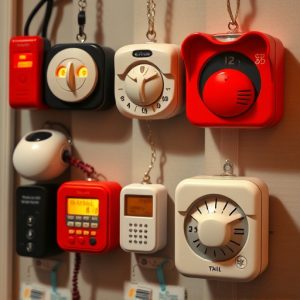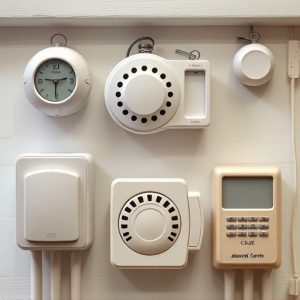Maximizing Safety: Decibel Alarms for Lone Workers’ Protection
Lone workers face unique safety risks like accidents and isolation. To combat these, a reliable pers…….
Lone workers face unique safety risks like accidents and isolation. To combat these, a reliable personal alarm system with maximum decibels (120-130 dB) is vital. These alarms quickly summon help in emergencies, penetrating noisy environments to ensure swift response times for isolated workers in sectors like construction, healthcare, and forestry. Essential features include automatic fall detection, GPS tracking, and remote control options. Effective implementation requires clear training on activation, emergency protocols, and decibel levels to prevent false alerts while empowering users to protect themselves efficiently.
Lone workers face unique safety challenges, making it crucial to implement effective alert systems. This article explores the vital role of maximum decibel personal alarms in safeguarding isolated individuals. We delve into understanding the risks associated with lone working, the importance of high-decibel alerts for immediate attention, and key features to consider when choosing a safety alert system. Additionally, we provide insights on implementing and training for effective use, ensuring preparedness and enhanced security.
- Understanding the Risks of Lone Working
- The Role of Maximum Decibel Personal Alarms
- Key Features to Consider in Safety Alert Systems
- Implementing and Training for Effective Use
Understanding the Risks of Lone Working
Lone workers, by definition, operate independently and often away from direct supervision, which inherently presents unique safety challenges. These risks can be diverse, ranging from physical hazards like accidents or violent encounters to more subtle dangers such as exhaustion or isolation. The absence of immediate support means that any issue encountered can quickly escalate, highlighting the critical need for robust safety measures.
One essential component in mitigating these risks is a reliable personal alarm system. Such devices, designed with maximum decibel levels, serve as a worker’s lifeline, providing an effective way to summon help promptly. Personal alarms should be easily accessible and functional, ensuring workers can activate them instantly in case of emergencies, thereby facilitating swift response and rescue efforts.
The Role of Maximum Decibel Personal Alarms
Personal alarms designed with maximum decibels play a pivotal role in enhancing safety for lone workers. These devices, often compact and portable, are engineered to emit loud sounds, ensuring that help can be summoned swiftly in case of emergencies. The high decibel level serves as a powerful signal, capable of penetrating even noisy environments, making it an effective tool for remote or isolated workers who may not have immediate access to assistance.
Maximum Decibel Personal Alarm Safety is paramount in sectors where lone workers face inherent risks. Whether in construction, forestry, or healthcare, these alarms provide a sense of security by allowing workers to quickly alert colleagues or emergency services when faced with hazardous situations. Their reliability and ease of use contribute to a comprehensive safety strategy, complementing other protective measures to create a safer working environment for isolated individuals.
Key Features to Consider in Safety Alert Systems
When selecting a safety alert system for lone workers, several key features should be at the forefront of your considerations. Firstly, maximum decibel level is crucial; a high-decibel personal alarm ensures that even in noisy environments, it will capture attention quickly. This feature is vital for immediate response times, especially in emergency situations.
Additionally, consider systems with automatic fall detection and GPS tracking. These technologies enable swift action in case of an accident or sudden immobility, as they can instantly notify emergency contacts and provide precise location data. Moreover, some advanced models offer remote deactivation and mute features for false alarms, enhancing user control and minimizing disruption.
Implementing and Training for Effective Use
Implementing and training are crucial aspects of ensuring effective use of personal alarm safety systems for lone workers. When introducing a maximum decibel personal alarm, organizations must provide clear instructions on when and how to activate it. Training should cover various scenarios, including self-hazard recognition, emergency response protocols, and the specific features of the alarm device. Employees should be taught to assess risks and understand the range and effectiveness of the personal alarm’s sound level, typically around 120-130 decibels, which is loud enough to attract attention without causing hearing damage.
Regular practice drills can enhance preparedness. Simulating various situations allows workers to familiarize themselves with the alarm’s operation and ensures they understand when and how to use it appropriately. Training should also emphasize de-escalation techniques and communication strategies before resorting to alarms, as misuse of alarms can lead to unnecessary distress and response costs. Effective training empowers lone workers to protect themselves while minimizing false alerts.
Lone workers face unique risks, but with the right safety alert systems, such as maximum decibel personal alarms, these can be effectively mitigated. By understanding key features and proper implementation, organizations can enhance the safety of their lone workers, ensuring a quieter yet safer environment. Always remember, the choice of equipment should align with specific work environments to ensure optimal protection.


